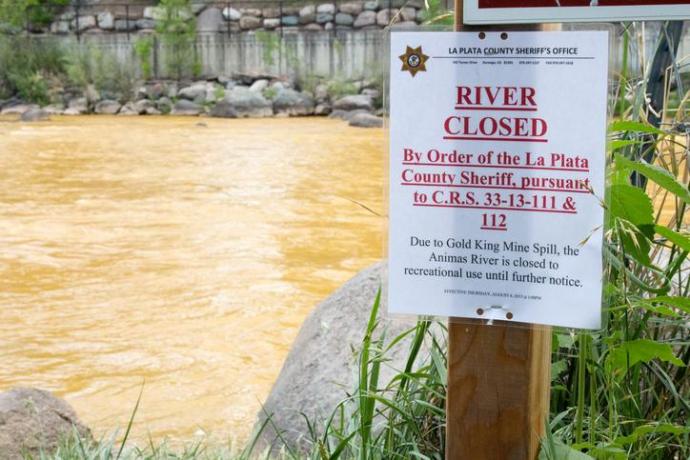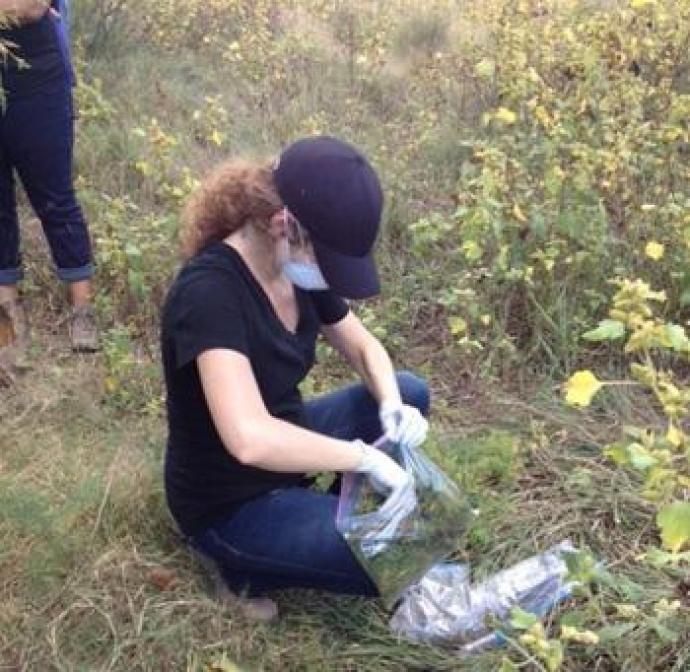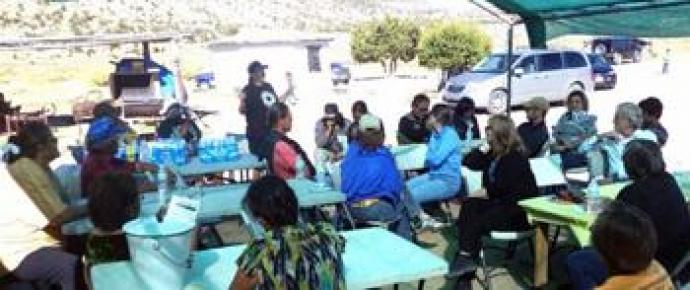Reversing Mining's Toxic Legacy on Tribal Lands
When a federal inspection team inadvertently released three million gallons of heavy metal-laden waste from a century-old, defunct gold mine near Silverton, Colorado into the Animas River, Lucia Rodriguez-Freire was one of the first responders on the scene.
“The gold plume was crossing the border from Colorado to New Mexico the day I started my new position as a postdoc researcher at the University of New Mexico,” Rodriguez-Freire, an assistant professor of civil and environmental engineering, said of the 2015 spill, which famously turned the river gold. “We knew we needed to react immediately: to analyze the metal content in the water and sediments and to assess the movement of contaminants from the spill site to downstream in the river.”

The team's findings inform our understanding of the long-term impact of the spill on affected farming communities in the Four Corners region, which include Navajo, Jicarilla-Apache, Southern Ute, Ute Mountain Ute and Hopi tribes. Among other phenomena, they showed that the concentration of metals in the water increased after high flow events. In looking to the sediment for clues, they found the mineral jarosite, which is known to precipitate – or combine into solids – with heavy metals, but remains stable only at acidic pH levels. As those levels rose during flow events, the heavy metals appeared to mobilize.
Rodriguez-Freire researches the interaction between biological and inorganic systems, such as microorganisms and metals, to understand the effect of contaminants on natural biogeochemical cycles and to remediate polluted sites. She designed, for example, a novel process to extract – and stabilize – arsenic from contaminated water by forming arsenic minerals such as realgar and orpiment, using microorganisms from anaerobic sludge. In a bioreactor, the microorganisms together reduce arsenate and sulfate in the presence of ethanol into the arsenic minerals, removing more than 90 percent of the dissolved heavy metal from the solution.
Her goals are to develop state-of-the-art wastewater treatment systems that remove persistent contaminants using ubiquitous, inexpensive materials, and to optimize bioremediation strategies for metal-contaminated natural environments.
She describes her approach to environmental remediation as a restoration of a natural system’s equilibrium – an alternative approach to removal.
“At mining sites, the metals that end up contaminating water and sediment were always there, but human activity disrupts the natural equilibrium through the use of leaching chemicals, direct alteration of the ecosystem and increased erosion. In hard rock mines of the Southwest, such as the Iron King Mine in Arizona, the Jackpile Mine in New Mexico, and the Gold King Mine in Colorado, you can see perfect examples of systems that were once in equilibrium when the rock system was intact. Heavy metal concentrations in the area were high before mining occurred – which brought the miners there. They left a toxic legacy from open-pit mining of mine waste accumulation in mine tailings and acid rock drainage,” she notes. “The challenge is to restore the natural equilibrium of the mine site, by slowing down the processes that lead to the mobilization and movement of contaminants.”

Rodriguez-Freire also studies the ways that uranium and arsenic accumulate in plants used by Native American communities living near abandoned mines.
“We want to understand the way contaminants interact with soil and water, microorganisms and plants, and look for mechanisms to stabilize them,” she notes.
While organic contaminants can be degraded into more innocuous components, metals, such as lead, cadmium, arsenic and uranium, are persistent. But they can be stabilized to prevent their movement and contact with people. At the Jackpile Mine site, where local plants accumulate uranium in their roots, Rodriguez-Freire and her colleagues are investigating how ubiquitous microorganisms and soil amendments can be deployed to prevent the toxic metal from moving.
“As we observed with arsenic, we can promote changes in metal speciation to a less mobile, more stable phase by adding nutrients to stimulate microbial activity. The target metal specie will become a more stable solid, or it will be more strongly adsorbed into the soil sediments. In this way, we are removing the contaminant from the water and into the sediment, trying to restore the original equilibrium of the site,” she says. “For this work, we need to use an integrative approach, working with microbiologists, geologists and chemists for a holistic understanding of the mechanisms of transformation.”
In a new project, she is researching the role of microbial processes on arsenic stability in sediments from the Cheyenne River in South Dakota which have been polluted by the Homestake Mine, and, if mobilized, could present a risk for Sioux Tribal lands downriver.
“The Homestake Mine is 200 miles away from the Cheyenne River Sioux Tribe reservation, and yet we have found elevated arsenic concentrations in the sediments nearby. We want to evaluate how stable the arsenic is and determine whether local activity might impact its mobility,” she says. “Local farms and ranches are a source of nutrients from agricultural run-off to the Cheyenne River. The fertilizers that are used to promote the growth of plants and the manure that is produced in local ranches can precipitate the microbial transformation of the arsenic in the sediments.”
There are more than 28,000 abandoned mines in the U.S., of which three quarters have yet to be investigated or remediated. Of these, 15,000, mostly in 14 Western states, involve uranium. Most of them are on federal or tribal lands.

“The communities living near the abandoned mines are at higher exposure risk to a wide number of contaminants, and we need to work with them to assess the risks and to restore the polluted sites so they can live in a healthy and safe environment on their lands.”